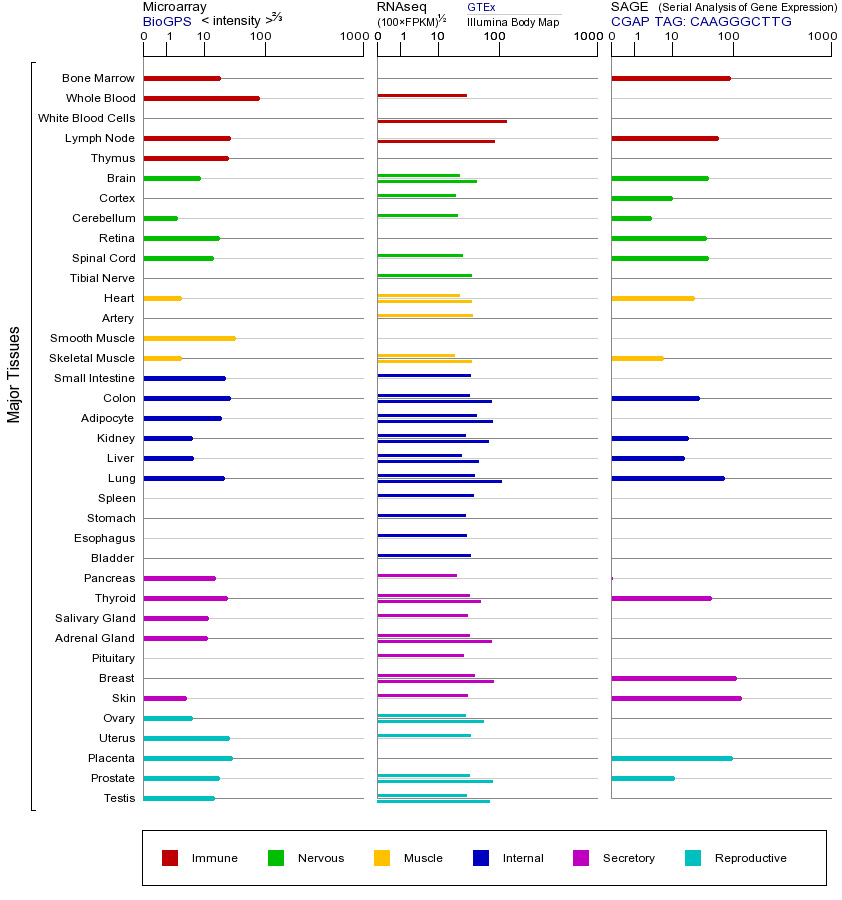RAP1B (RAP1B, member of RAS oncogene family)
- symbol:
- RAP1B
- locus group:
- protein-coding gene
- location:
- 12q15
- gene_family:
- RAS type family GTPases
- alias symbol:
- K-REV|RAL1B|DKFZp586H0723
- alias name:
- None
- entrez id:
- 5908
- ensembl gene id:
- ENSG00000127314
- ucsc gene id:
- uc001suc.5
- refseq accession:
- NM_001010942
- hgnc_id:
- HGNC:9857
- approved reserved:
- 1989-06-30
RAP1B(Ras-related protein Rap-1b)属于Ras超家族中的Rap亚家族,该家族还包括RAP1A、RAP2A、RAP2B等成员。RAP1B编码一种小GTP酶,在细胞信号传导中起关键作用,通过GTP/GDP结合状态切换调控下游通路。其主要功能包括参与细胞黏附、迁移、增殖和分化,尤其在整合素介导的细胞外基质相互作用中发挥核心作用。RAP1B通过激活效应蛋白如RIAM和Talin,促进整合素活化,从而影响细胞与基质的黏附强度。该基因在血小板活化、免疫细胞迁移及血管发育等生理过程中至关重要。RAP1B的突变可能导致功能异常,例如持续激活突变会增强细胞迁移能力,与肿瘤转移相关;而功能丧失突变则可能破坏整合素信号,导致出血倾向或免疫缺陷。研究发现RAP1B过表达与多种癌症(如乳腺癌、结直肠癌)的侵袭性增强有关,因其促进肿瘤细胞迁移和血管生成;相反,敲低RAP1B会抑制癌细胞转移但可能影响正常组织修复。RAP1B还与心血管疾病相关,其异常表达可能影响血管内皮功能。Rap基因家族的共性在于它们都是小GTP酶,通过GTP结合态(激活)和GDP结合态(失活)的转换调控多种细胞过程,且多数成员参与细胞骨架重组和细胞极性建立。RAP1B与RAP1A有89%的氨基酸同源性,但组织分布略有差异,RAP1B在血小板中含量尤为丰富。该基因还通过调控MAPK和PI3K/AKT等通路影响细胞存活信号。在神经系统,RAP1B参与突触可塑性调控,其表达异常可能与神经退行性疾病有关。最新研究还发现RAP1B在糖代谢调控中起作用,可能成为糖尿病治疗的潜在靶点。
This gene encodes a member of the RAS-like small GTP-binding protein superfamily. Members of this family regulate multiple cellular processes including cell adhesion and growth and differentiation. This protein localizes to cellular membranes and has been shown to regulate integrin-mediated cell signaling. This protein also plays a role in regulating outside-in signaling in platelets. Alternate splicing results in multiple transcript variants. Pseudogenes of this gene are found on chromosomes 3, 5, 6 and 9. [provided by RefSeq, Oct 2011]
该基??因编码在RAS状小GTP结合蛋白家族的一个成员。这个家族的成员调节多种细胞过程,包括细胞粘附和生长和分化。此蛋白质定位于细胞膜,并已显示出调节整合素介导的细胞信号传导。这种蛋白也起着调节由外向内的血小板信令的作用。选择性剪接结果在多个抄本变形。这个基因是假的[由RefSeq的,2011年10月提供] 6染色体3,5和9中
基因本体信息
RAP1B基因(以及对应的蛋白质)的细胞分布位置:
- 质膜
- 细胞质
- 细胞外
- 高尔基体
- 囊泡
- 细胞骨架
- 内质网
- 细胞核
- 内体
- 溶酶体
- 线粒体
RAP1B基因的本体(GO)信息:
| 名称 |
|---|
| 4014 Ras signaling pathway [PATH:hsa04014] |
| 4015 Rap1 signaling pathway [PATH:hsa04015] |
| 4010 MAPK signaling pathway [PATH:hsa04010] |
| 4024 cAMP signaling pathway [PATH:hsa04024] |
| 4510 Focal adhesion [PATH:hsa04510] |
| 4611 Platelet activation [PATH:hsa04611] |
| 4670 Leukocyte transendothelial migration [PATH:hsa04670] |
| 4062 Chemokine signaling pathway [PATH:hsa04062] |
| 4972 Pancreatic secretion [PATH:hsa04972] |
| 4720 Long-term potentiation [PATH:hsa04720] |
| 4722 Neurotrophin signaling pathway [PATH:hsa04722] |
| 5211 Renal cell carcinoma [PATH:hsa05211] |
| 名称 |
|---|
| Adaptive Immune System |
| GRB2:SOS provides linkage to MAPK signaling for Integrins |
| Hemostasis |
| Immune System |
| Integrin alphaIIb beta3 signaling |
| p130Cas linkage to MAPK signaling for integrins |
| Platelet activation, signaling and aggregation |
| Platelet Aggregation (Plug Formation) |
| Rap1 signalling |
| 疾病名称 | 关系值 | NofPmids | NofSnps | 来源 |
| Diabetes Mellitus, Experimental | 0.08 | 1 | 0 | RGD |
| Squamous cell carcinoma | 0.003538676 | 3 | 0 | BeFree_LHGDN |
| MYELODYSPLASTIC SYNDROME | 0.00272435 | 1 | 0 | LHGDN |
| Thyroid Neoplasm | 0.002367032 | 1 | 0 | GAD |
| Carcinoma, Papillary | 0.002367032 | 1 | 0 | GAD |
| Neoplasm Metastasis | 0.000814326 | 3 | 0 | BeFree |
| Colorectal Carcinoma | 0.000542884 | 2 | 0 | BeFree |
| Central neuroblastoma | 0.000271442 | 1 | 0 | BeFree |
| Xenograft Model | 0.000271442 | 1 | 0 | BeFree |
| Pneumonia | 0.000271442 | 1 | 0 | BeFree |
联系方式
山东省济南市章丘区文博路2号 齐鲁师范学院 genelibs生信实验室
山东省济南市高新区舜华路750号大学科技园北区F座4单元2楼
电话: 0531-88819269
E-mail: product@genelibs.com
微信公众号
关注微信订阅号,实时查看信息,关注医学生物学动态。







